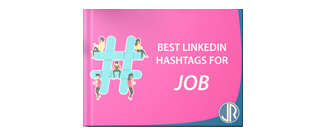Should you care about your customers or their problems? Review of the ticketing approach
There are two major strategies when it comes to dealing with customer enquiries: the ticketing approach and the conversation approach. Both methods have pros and cons, one is more problem centric while the other is more customer centric. Let’s review these strategies to define which best fits your business.

What is a ticketing system?
A ticketing system is a mean to manage issues within your organization, managing the incidents from opening to resolution. Such system will allow you to allocate a number to each incoming issue (a “ticket”) for better tracking of the problem and its resolution. With this approach, the various stakeholders concerned by the issue can easily identify and follow-up on the case being managed.
Typically, a company using a case management or ticketing system is easy to recognize as it will send you an auto-response stating your ticket number and ask you to mention this number in the future shall you need to refer to this same issue.
Once the ticket has been generated, it will be assigned, manually or automatically, to a person or a group of people that have the ability to solve the problem.
A ticketing system can be very efficient: one problem, one ticket, on solution. It is especially powerful when it comes to technical issues that require to standardize the process flow and track every action.
Unfortunately, when it comes to customer care, ticketing systems fall a little short.

The limits of a ticketing system
While a case management system is great to track problems independently, it isn’t very customer-centric.
First of all, one ticket = one problem. This means that a customer trying to fix multiple problems at a time will see his inquiry split in multiple tickets with multiple numbers, tracking and resolution timelines.
Beyond that, associating a problem to a ticket prevents the agent in charge from getting the full picture. Each ticket being independent, the customer service representative doesn’t get the full conversation and past interactions, each being stored in a separate ticket. There is no proper 360° view including past conversational data and the agent needs to go the extra mile to gather the necessary information to resolve the case.
Typically, this approach leads to situations where you may have to re-explain who you are, what your preferences are, what it is you are looking for each time you contact a company, whether you contact them for the first time or have been a loyal customer for 15 years. This happens because the agent in charge of your “ticket” solely focuses on the problem assigned to him, without a global view of your past conversations with the company.
As a dissatisfied customer typically contacts a customer service through multiple channels to increase the odds of receiving a quick response, the ticketing system that individualize problems creates multiple occurrences of the same problem and allocates the tickets independently from one another, increasing greatly the workload and the overall response time. This is the reason why you sometimes receive an acknowledgment like “We have received your inquiry – submitting it multiple times won’t get you a faster response, please be patient, we will get back to you very soon.” Sending multiple messages actually increase the workload and reduces the response speed.

New channels and ticketing
Case management and ticketing systems have evolved a lot in the recent years. There are no longer limited to web forms and can handle a large number of channels, including social media and messaging channels.
The limit of this approach is that these channels built for conversations are automatically converted to tickets. When having a one-on-one conversation on Facebook Messenger, WhatsApp or iMessage, you expect the conversation to be fluid and to include multiple topics. This is unfortunately incompatible with a ticketing approach that slices up each issue into neat tickets to be managed independently from one another.
Customers end up having very inconsistent experiences across channels while 65% of them claim it to be a major source of frustration. Standardizing the experience across touch points and getting a global view of all interactions is a key to customer satisfaction.

A different approach with a Digital Customer Interactions Platform
The alternative to ticketing system is a platform that regroups messages from various digital channels into threads. More than a technological change, this approach implies a strategical switch: you move from problem-centric customer service to customer-centric customer care.
An omni-digital platform regroups messages from all available digital channels (email, live-chat, social media, messaging, in-app, communities, etc.) and, instead of encapsulating each issue inside a ticket, organizes messages into threads around a specific customer profile.
With this approach, the objective is no longer to solve a problem, but to satisfy a customer. The agent benefits from a global view of all past and current conversations across all channels with an immediate benefit of merging duplicates and reducing the workload.
Since the customer is at the heart of the strategy, the omni-digital platform would first allocate each incoming message to the agent previously handling the customer to allow consistency in the follow-up, then redirect to a different customer service representative if the original one wasn’t available.

You are no longer just a number
In a previous article, I was explaining that emotion isn’t a customer service’s first priority. That being said, no-one appreciates to be treated as a number. We have ID number, social security numbers, credit card numbers, phone numbers, but we expect customer care to be more human.
With a ticketing approach, your customer is just another number, waiting in line for someone to take care of him. A more customer-centric approach allows the customer to be treated as an individual with his very own profile, past conversations and situation.
What is your approach? Is your customer service organized around customers or problems?














 Français
Français English
English